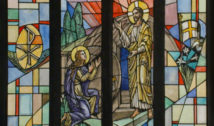
Litha: How Pagans Celebrate The Summer Solstice
- By C Barnett --
- 21 Jun 2018 --

The Longest Day Of Year Is One Of Most Important Pagan Holidays
Litha is a specific celebration that is important to pagans and other celebrants for a variety of reasons. Most people enjoy Litha, which typically is called the Summer Solstice, by celebrating the longest day of the year, which falls on June 21. During this time, the sun is out for the most prolonged period, allowing people to enjoy as much time with daylight as possible. However, the Pagans have a variety of rituals and symbolism attached to Litha that goes beyond a beautiful, long day in the sun.
Litha: How Pagans Celebrate The Summer Solstice[/tweetthis]
The Power of Life
One of the reasons that modern Pagans celebrate Litha is that it represents the potency of life as brought forth by the sun. This is the longest day of the year, and the sun brings about life through plants and warmth that facilitates the comfort of creatures worldwide. One of the most common rituals that are seen on Litha occurs when the sun is at its zenith in the midday sky, the time when the sun is most potent and visible on the day it is out for the longest time. People celebrating Litha will take part in a variety of different rituals including meditation and daytime gatherings at noon to celebrate the power of the sun. Of course, Pagans received a great deal of attention for gathering at Stonehenge in England to celebrate the sunrise on Litha, a rite that has been occurring for centuries.
The daytime rituals of Litha are not only celebrated by Pagans, and have a rich history with other groups such as Native Americans. Various tribes would celebrate Litha in different ways from dancing to special adornments worn in celebration. Even individuals who do recognize any religious significance of Litha will celebrate by participating in festivals to mark the occasion.
A Delicate Balance
Litha is not only seen as a time to celebrate the power of the sun; it is also a time to celebrate the balance between light and dark, and the importance of nature’s cycles in general. Some Pagans will take part in massive bonfire celebrations once the sun goes down. Not only does the symbolize the power of life through the sun, but it also serves to keep the light in the darkness at a time when the days will inevitably begin to become shorter. Thus, the bonfires are a reminder of the need to keep warm and light abundant in the darkest nights that will come in winter.
The celebrations of Litha take place across the globe, with some of the most popular ones occurring in New York City, Stonehenge, Russia, and across South America. The chances are that there will be some form of solstice celebration near most major cities on June 21st!



















